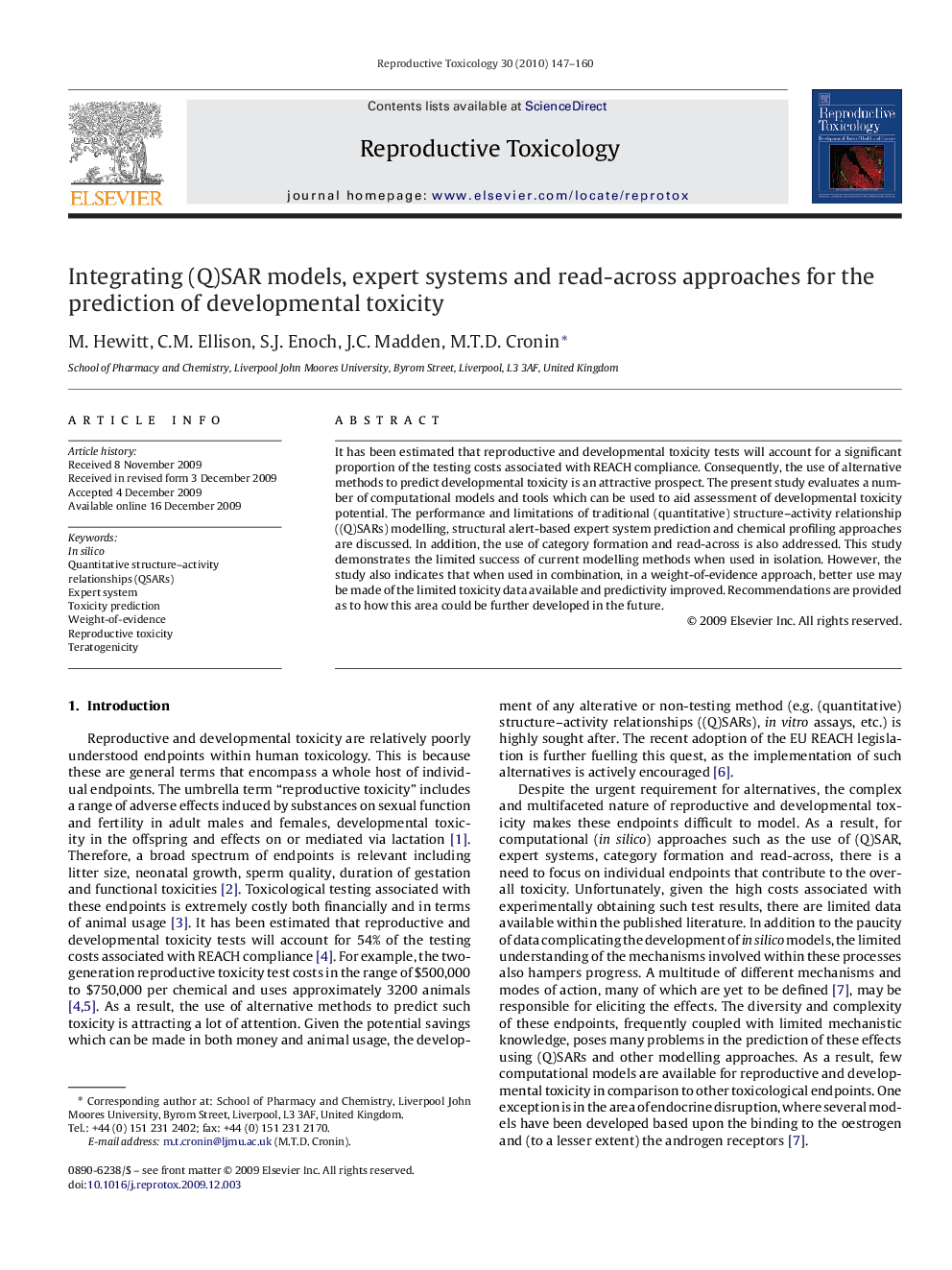| Article ID | Journal | Published Year | Pages | File Type |
|---|---|---|---|---|
| 2594325 | Reproductive Toxicology | 2010 | 14 Pages |
It has been estimated that reproductive and developmental toxicity tests will account for a significant proportion of the testing costs associated with REACH compliance. Consequently, the use of alternative methods to predict developmental toxicity is an attractive prospect. The present study evaluates a number of computational models and tools which can be used to aid assessment of developmental toxicity potential. The performance and limitations of traditional (quantitative) structure–activity relationship ((Q)SARs) modelling, structural alert-based expert system prediction and chemical profiling approaches are discussed. In addition, the use of category formation and read-across is also addressed. This study demonstrates the limited success of current modelling methods when used in isolation. However, the study also indicates that when used in combination, in a weight-of-evidence approach, better use may be made of the limited toxicity data available and predictivity improved. Recommendations are provided as to how this area could be further developed in the future.
